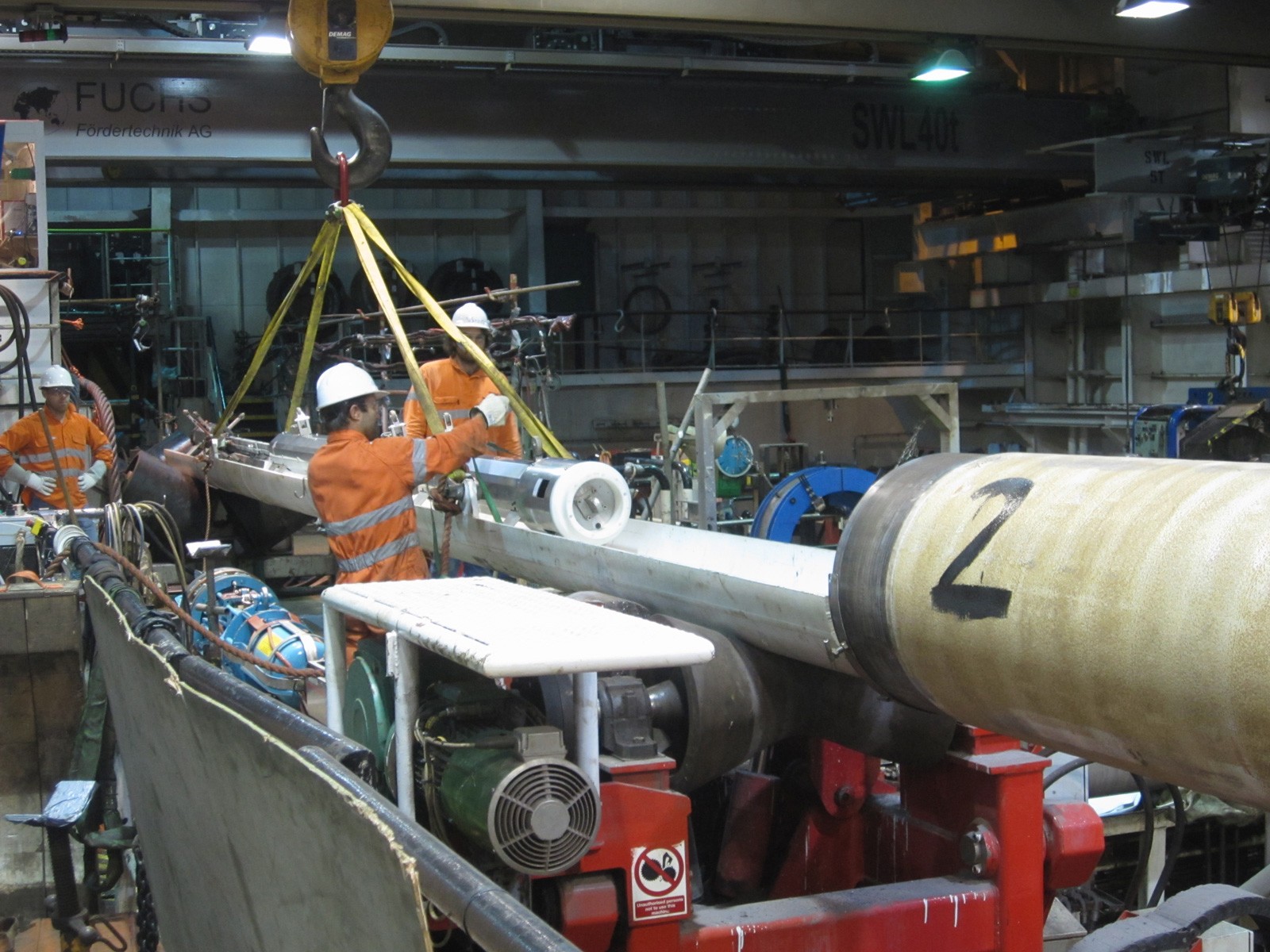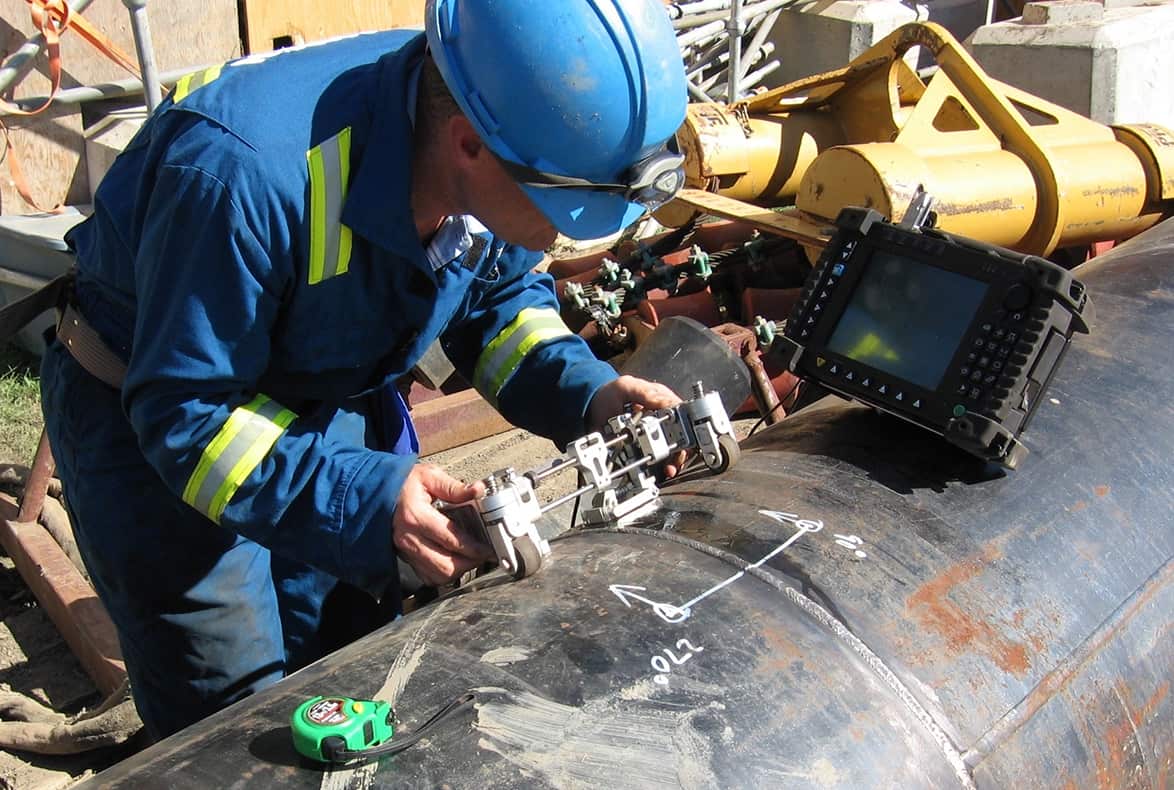Pipeline Welding Inspection: Safeguarding Pipelines with Precision and Experience
Pipeline Welding Inspection: Safeguarding Pipelines with Precision and Experience
Blog Article
Comprehensive Guide to Pipe Welding Inspection: Guaranteeing Honesty and Safety in Pipe Building And Construction and Upkeep
The honesty and safety of pipes are critical in today's infrastructure landscape, underscoring the essential role of welding assessment in pipe building and upkeep. Pipeline Welding Inspection. The complexities involved in welding examination raising relevant inquiries concerning market criteria and the evolving innovations that might redefine these techniques.

Relevance of Welding Evaluation
Welding inspection plays a crucial role in making sure the honesty and safety of pipeline systems. It acts as a basic process that validates the quality and dependability of bonded joints, which are usually one of the most weak spots in pipeline building. Via organized analysis, examiners can recognize possible defects such as cracks, porosity, and insufficient blend, which may jeopardize the structural integrity of the pipeline.
The significance of welding examination extends beyond mere conformity with industry criteria; it likewise safeguards public wellness and the environment. If failures take place, pipelines bring harmful products pose considerable risks. Reliable examination methods help prevent tears and leakages, reducing environmental damages and safeguarding communities. In addition, comprehensive evaluations can improve the longevity of pipe systems, reducing the requirement for pricey fixings and downtime.
Along with guaranteeing safety and security and conformity, welding assessment promotes a society of quality control within companies. By focusing on inspection throughout the welding process, companies can build an online reputation for integrity and excellence, eventually bring about raised client confidence and service chances (Pipeline Welding Inspection). Thus, the importance of welding examination can not be overemphasized in the context of pipe building and maintenance
Secret Welding Processes
Different welding processes are utilized in pipeline building, each with its own advantages and applications. Among the most commonly utilized techniques are Protected Metal Arc Welding (SMAW), Gas Tungsten Arc Welding (GTAW), and Gas Steel Arc Welding (GMAW) SMAW is preferred for its flexibility and capability to do well in numerous ecological conditions, making it appropriate for field applications.
GTAW, commonly described as Tungsten Inert Gas (TIG) welding, is recognized for its capability to generate top quality welds with exceptional control over warm input, making it perfect for thin-walled pipes and stainless steel products. GMAW, or Metal Inert Gas (MIG) welding, supplies high deposition rates and is efficient for massive jobs, typically employed in the construction of pipes in regulated settings.
In Addition, Immersed Arc Welding (SAW) is utilized for its deep penetration and high performance, specifically in the building and construction of large-diameter pipes. Each of these processes adds to the general integrity and safety and security of pipeline constructions, making it possible for welders to select the most ideal technique based on material kind, task demands, and ecological problems. Recognizing these essential welding procedures is crucial for efficient pipeline welding assessment.
Common Issues and Their Influence

Porosity, defined by tiny gas pockets entraped within the weld, deteriorates the product and can lead to leaks. Fractures, which might happen because of thermal tensions or inappropriate cooling, can propagate and result in structural failing under pressure. Damaging, where the base metal is worn down along the weld bead, reduces the reliable cross-section of the pipe, boosting the danger of crack.
Insufficient combination takes place when the weld metal does not correctly bond with the base steel, leading to weak areas that might stop working under stress. Slag incorporation, the entrapment of non-metallic product within the weld, can also damage the joint's click reference stability. Identifying and addressing these issues early in the building process is vital to ensuring the long-lasting reliability and security of pipeline systems, consequently safeguarding both the framework and the environment.
Examination Techniques and Devices

Visual assessment is the very first line of protection, permitting assessors to recognize surface area abnormalities, imbalance, or various other noticeable flaws. Ultrasonic screening utilizes high-frequency acoustic waves to find internal problems, supplying exact deepness dimensions and identifying issues without damaging the weld. Radiographic testing utilizes X-rays or gamma rays to produce pictures of the weld, making it possible for the recognition of interior voids, splits, or inclusions.
Magnetic bit testing is especially reliable for finding surface and near-surface interruptions in ferromagnetic materials. This method entails using a magnetic field and fine iron fragments to the weld, revealing problems via the accumulation of bits at imperfection sites.
In addition to these methods, specialized devices such as automated ultrasonic testing devices and electronic radiography systems boost examination accuracy and effectiveness, ensuring a detailed analysis of pipeline welds throughout building and upkeep.
Finest Practices for Compliance
Sticking to best practices for conformity in pipe welding inspection is important for making sure the honesty and safety and security of the infrastructure. Organizations should develop a comprehensive top quality management system that lines up with industry standards such as ASME, API, and AWS. This includes establishing thorough welding procedures that specify the certifications, products, and strategies needed for welders.
Normal training and qualification of examination workers are important to preserve high proficiency degrees. Assessors must be acquainted with various non-destructive screening (NDT) techniques, including ultrasonic screening, radiographic screening, and visual examination, to properly determine click to investigate prospective issues.
Documents plays a vital role in compliance; maintaining accurate records of examinations, weld treatments, and employees certifications aids to guarantee traceability and accountability. Set up audits and testimonials of welding techniques must be conducted to identify areas for improvement and make certain adherence to established methods.

Final Thought
To conclude, the application of extensive welding assessment methods is extremely important for ensuring the stability and security of pipe construction and maintenance. By recognizing flaws and utilizing innovative assessment strategies, companies can dramatically improve the quality of bonded joints. Adhering to best methods fosters compliance with market standards, ultimately guarding public wellness and stopping environmental dangers. Constant enhancement in examination processes will contribute to the durability and integrity of pipe systems, highlighting the crucial function of welding assessment in the sector.
The integrity and safety and security of pipelines are critical in today's framework landscape, highlighting the critical duty of welding examination in pipe building and upkeep. Understanding these vital welding procedures is vital for reliable pipe welding examination.
Sticking to finest techniques for compliance in pipe welding evaluation is essential for making sure the honesty and security of the click over here infrastructure.In final thought, the execution of extensive welding inspection methods is extremely important for making certain the integrity and safety of pipe construction and upkeep. Continual enhancement in evaluation procedures will contribute to the durability and dependability of pipeline systems, underscoring the critical function of welding examination in the industry.
Report this page